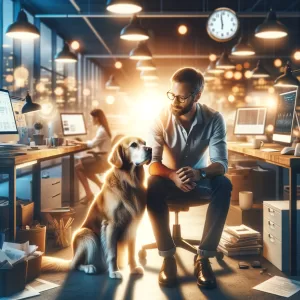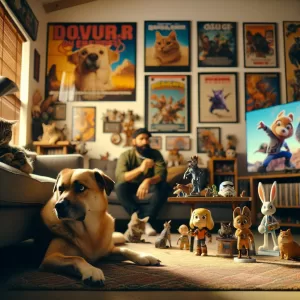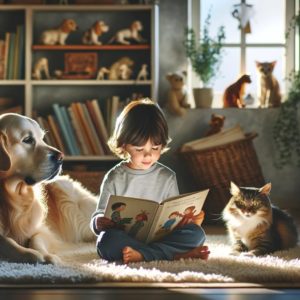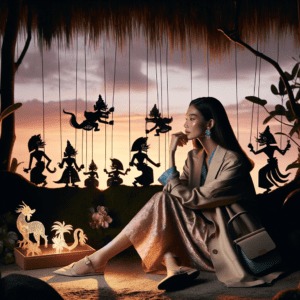There’s a silent conversation that happens between a human and a pet. This conversation transcends languages, geographical boundaries, and even time. As humans, we’ve shared a unique bond with our animal counterparts for thousands of years, a bond that has influenced our culture in ways more profound than we often realize. In this narrative journey, we’ll uncover how pets have shaped, inspired, and steered human cultures throughout history, and in turn, how they’ve sculpted the world as we know it.
Chapter 1: The Domestication Dance: An Evolutionary Waltz
Long before skyscrapers kissed the clouds, and centuries before the wheel marked its first rotation, there was a bond being formed that would ultimately change the course of history. It was the beginning of a symbiotic relationship – a ballet between two dancers from different species. This dance, a vibrant testament to inter-species connections, was what we now call ‘domestication.’
The First Steps Towards Domestication
The process of domestication was no mere chance; it was a complex interaction of biological and cultural exchanges. It was a dance that began around 15,000 years ago, predating the advent of agriculture. Imagine a world where the wilderness reigned supreme, and early humans were just another link in the food chain. Amidst this raw and untamed panorama, the first faint strains of the domestication waltz were heard.
The likely initiators of this waltz were the wolves, the ancestors of today’s domestic dogs. The wolves, intrigued by the scraps left by humans, ventured closer to the human settlements. The humans, recognizing the wolves’ potential as hunting partners and protectors, allowed this proximity. This was the start of a mutualistic relationship, the precursor to domestication.
The Selective Symphony: The Role of Breeding in Domestication
As the dance continued, early humans started selectively breeding these animals, favoring those with desirable traits. Canines with better hunting skills, gentler demeanor, or stronger loyalty were chosen to pass on their genes, shaping the evolution of the entire species.
This selective breeding, the conductor of our domestication symphony, extended its baton to other species. Cats, starting as rodent hunters in early agricultural settlements, were domesticated around 9,500 years ago. Birds, like the rock pigeon domesticated nearly 5,000 years ago, provided food and later evolved into messenger and racing birds.
Even large creatures such as horses and camels were brought into this evolutionary waltz. Horses, first used for their milk and meat, eventually revolutionized transportation and warfare, while camels became the lifeblood of societies in arid regions, providing transport, wool, and milk.
The Cultural Shift: Pets at the Heart of Civilization
This process of domestication marked a significant shift in human culture. Animals were no longer seen just as food sources or threats, but as partners and companions. They became integral parts of human societies, woven into the fabric of our cultural, emotional, and economic lives.
Dogs evolved from being mere hunting companions to protectors, herders, and ultimately, cherished pets. Cats, from being rodent controllers, ascended to being loved companions, and even divine symbols in certain cultures. The domestication of birds led to the development of aviculture, the practice of keeping and breeding birds, which has added a delightful chorus to the human culture.
The Enduring Dance: The Ongoing Evolution
Even today, the dance of domestication continues to influence our cultural landscape. Our pets are no longer confined to roles of utility. They are family members, emotional companions, and sources of boundless, unconditional love.
They’ve inspired art and literature, informed our social constructs, and have even found their way into our digital lives. With every beat of this dance, pets continue to shape our values, behaviors, and ultimately, our collective human identity.
So, as we dive deeper into exploring the influence of pets on human culture, let’s acknowledge this first dance, the evolutionary waltz of domestication. A dance that has transcended generations and echoed through the corridors of time, casting an indelible pawprint on the sands of human culture.








